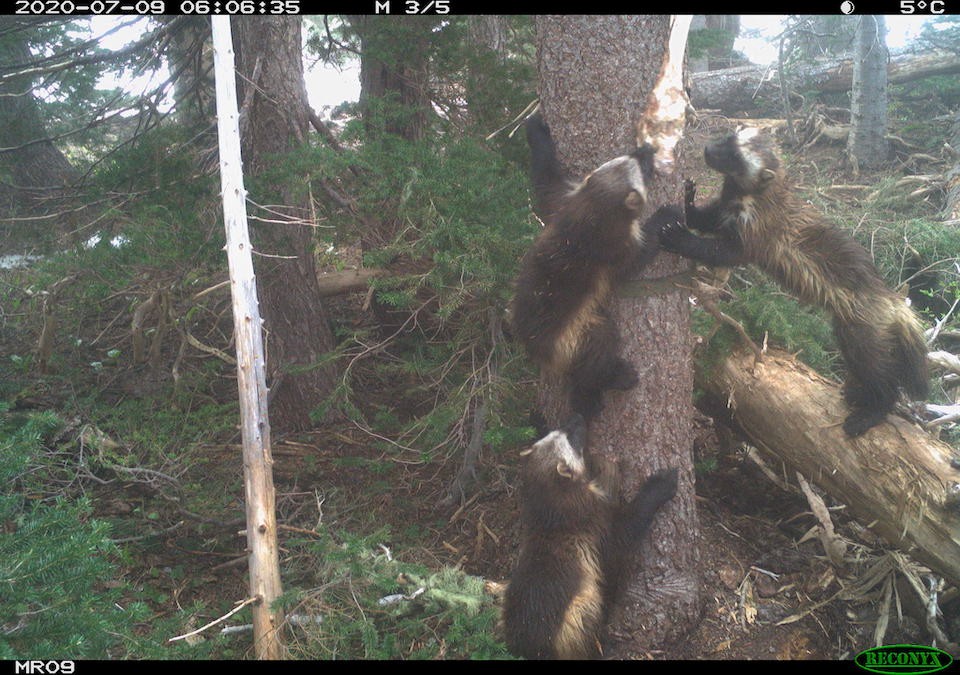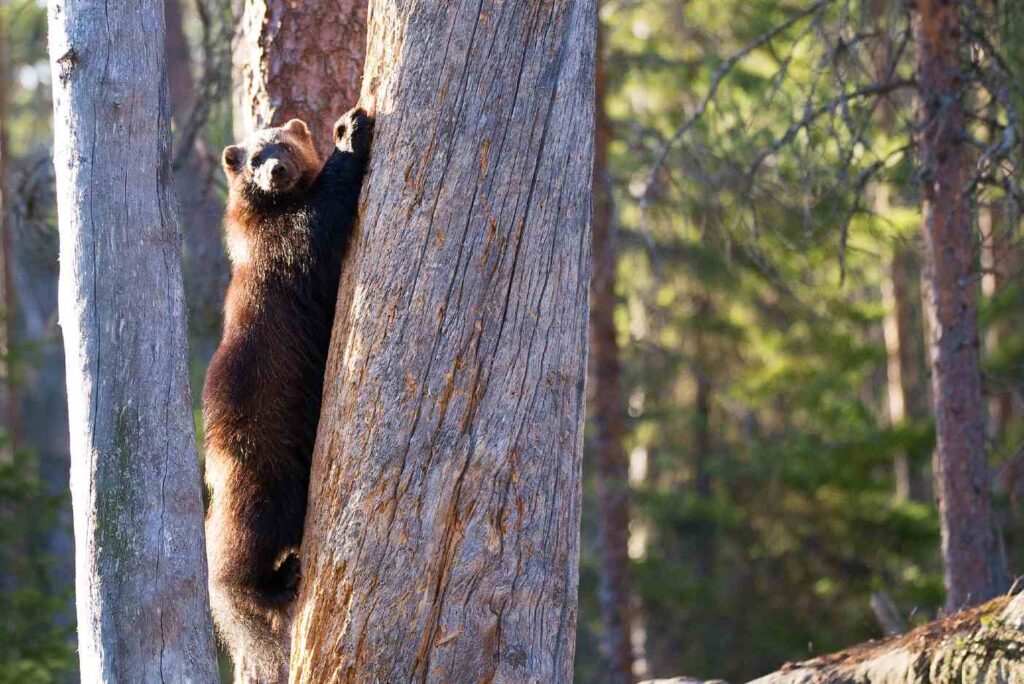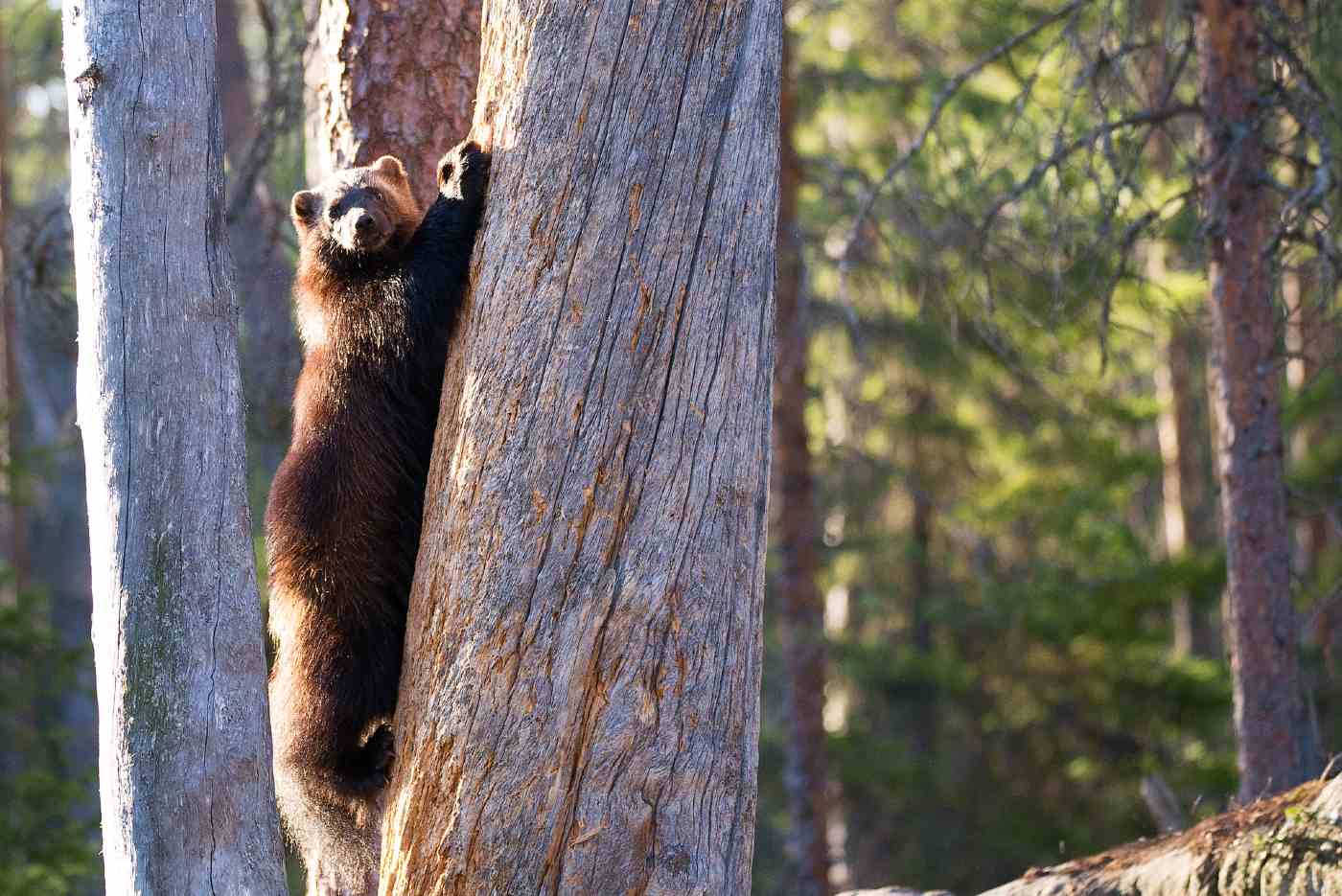The picturesque Mount Rainier National Park is once again home to wolverines, as a nursing mother and two kits were recently spotted by camera stations within the park.

They are the first wolverines to establish residence in Mount Rainier in over 100 years, and their discovery is purported as good news for wildlife management within the park, and for the ecosystem surrounding it.
“It’s really, really exciting,” said Mount Rainier National Park Superintendent Chip Jenkins. “It tells us something about the condition of the park—that when we have such large-ranging carnivores present on the landscape that we’re doing a good job of managing our wilderness.”
The nursing mother, called Joni, and her kits were discovered by scientists from the Cascades Carnivore Project, (CCP) who were responsible in 2018 for setting up the camera stations which led to the sighting of the three fur balls scampering across a meadow into a forest in a video posted on the NPS Twitter account.
With confirmed sightings in the adjacent area and suitable wilderness habitat in Mount Rainier National Park, the CCP believed wolverines may start returning to the Washington state park.
The CCP works to raise awareness about less understood carnivores of North America’s forests, such as fishers, lynx, and wolverines.
“Many species that live at high elevation in the Pacific Northwest, such as the wolverine, are of particular conservation concern due to their unique evolutionary histories and their sensitivity to climate change,” Dr. Jocelyn Akins of the CCP said. “They serve as indicators of future changes that will eventually affect more tolerant species and, as such, make good models for conservation in a changing world.”
A fierce, hungry, yet skittish predator

The wolverine is the largest member of the mustelidae, or weasel family. A cold weather expert, they possess small ears, a short snout, and large paws that allow them to run in the snow without sinking down into the drifts. Their scientific name is gulo gulo, Latin for ‘the Glutton’, as they will eat just about anything dead and actively hunt animals much larger than them like deer, and even predators like lynx.
They have a ferocious reputation as an animal that will try and defend their kills even from bears or wolves.
However wolverines are extremely rare in the United States, and even in regions of prime habitat, the National Parks Service estimates their density to be about one individual per 100 square miles, leading to a total of between 300 and 1,000 in the lower 48 states.
The locations of the Mount Rainier wolverine den and camera stations have not been released in order to protect the wolverines from potential harm or accidental disturbance, but there are still ways for visitors to help monitor wolverine recovery.
MORE LIKE THIS: In Just 2 Years, They’ve Rediscovered 4 Amazing Animals on Their ‘25 Lost Species’ List’
“Backcountry enthusiasts, skiers, snowshoers and snowmobilers can help us monitor wolverines and contribute to studying their natural return to the Cascade ecosystem,” said Dr. Tara Chestnut, a park ecologist.
SHARE News Of This Fab Wolverine Family With Your Friends On Social Media…




















